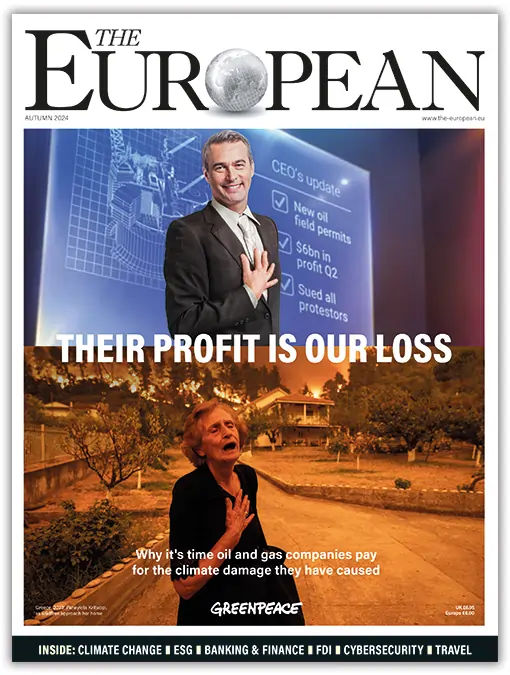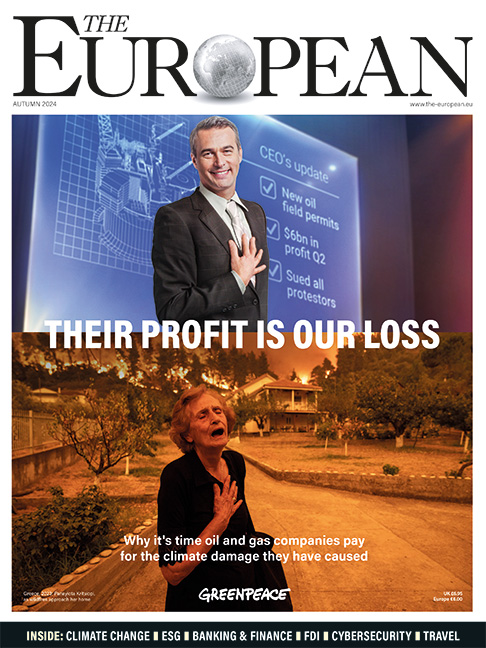In the 22 years since John Kotter wrote his seminal book Leading Change, organisations have spent hundreds of millions of dollars on operational transformations and process improvement efforts to achieve sustainable business improvements. And yet about two thirds of these initiatives seem destined to fail. Indeed, the failure rate has remained steady from 1996, when Mr Kotter published his work, to 2015, when a McKinsey Global Institute survey found similar results. So, why is this?
Businesses and consulting firms have certainly created better continuous improvement “mouse traps” over time. A Google search of “technology solutions for operational improvements”, for instance, yields over 3.6 million results. We counted over a thousand Lean Six Sigma conferences across the globe in 2017 itself. And yet, in spite of all these innovations and ongoing dialogue, something is still clearly missing.
In this article we want to offer a seemingly simple but rarely explored view that may help organisations increase their odds of creating successful transformations and sustained business results – a deeper focus on the human system in addition to process improvement.
Any significant effort to improve is a process of deep learning for individuals and for organisations collectively. Deep learning goes beyond learning how to use new tools and processes. It requires people to fundamentally shift how they see themselves, others, and their work. In many types of transformations people must learn how to learn – often more quickly and continually than they may have done in the past (e.g., when applying the Toyota Kata or “design thinking” as part of regular day-to-day work). Often in organisations, the deep learning that needs to happen for people as part of a transformation is underestimated and the transformation becomes more about imposing structures, tools, and frameworks, rather than creating conditions for new ways of thinking.
You may think, “this sounds so basic and perhaps even easy”. But, most people and organisations actively resist learning – and therefore miss the opportunity to adapt and transform in ways that allow for continued success. (Perhaps a decision that involved a lot of uncertainty and personal risk).
The reason why something as basic as learning is so difficult to achieve is because learning is almost always accompanied by fear – a topic that is hardly talked about, let alone addressed in organisations. Fear can keep people – senior leaders, middle managers, frontline employees, suppliers, and even customers – stuck in patterns that are no longer useful. A productive relationship with fear can spur amazing learning and growth for individuals and organisations.
A dysfunctional relationship with fear – which is all too common – at both the individual and organisational levels can inhibit learning and therefore hinder any significant organisational improvement effort. Shifting the relationship that people have with their own fears, then, must become one central part of a transformation effort. Only then will a continuous cycle of deep learning be more likely to occur for a critical mass of people.
Impediments to learning
What makes learning so challenging for adults? One answer is that people let their experience of fear push them into a threatened, narrow, survival-oriented mindset. In this place, learning is difficult or impossible since the tendency here is to defend current positions and patterns, rather than be open to new ones.
And yet, fear is necessary and useful. It arouses and motivates people. In fact, many incentive and career development systems at organisations are built on this human dynamic. Some degree of stress, and fear of consequences, can propel people to try hard and strive to achieve even in difficult circumstances.
The challenge is that beyond a certain level of sustained stress and fear, human performance drops off precipitously as people become exhausted, lash out or shut down. And it is this scenario that many people experience in their lives at work – particularly in organisations undergoing significant internal or external change.
What’s going on here? Our brains are designed for split-second reactions to new threats. We can immediately shift into fight, flight, or freeze (blending into the background) reactions when perceiving a threat. And this is undeniably useful for us as individuals and as a species when the threat is a physical one, such as a wild animal. We may not have survived very long without this ability to react quickly!
In organisational life, however, where emotional rather than physical threats abound, these natural survival mechanisms remain active but end up being counterproductive. The same fight, flight, and freeze reactions that serve us well under physical threats can lead to behaviours that erode trust, strain relationships, and limit our own curiosity and creativity. We may feel powerful and self-righteous in a situation, but we become blind to how ineffective we’re being in trying to achieve goals we care about – beyond just managing our own ego.
And our infinite capacity for remembering emotional pain ensures reactive patterns of behaviour persist long after the initial stimulus recedes. We learn how to play it safe to survive in our environment – and we instill these survival patterns in others as they move into our organisations. This is how less-than-constructive cultures are born and perpetuate.
Although, in this reactive mode, deep learning and growth is just not possible. And at an organistional level, adapting to new complexities and changes in the world become very difficult. This is a primary reason why fear is one of the largest sources of wasted energy in an organisation.
Fear as a cue for learning and growth
So how can leaders shift their organisations out of these reactive and fixed patterns and develop cultures of continuous learning and improvement?
The first step is for the formal and informal leaders in the organisation to become more mindful of their reactive fear-based patterns and to start making noticeably different choices in stressful situations. The key to this is for individuals to begin to see how their fears – rather than something to be avoided or reacted to – can be cues for learning and growth. This is an active process and journey that leaders can embark on through guided workshops, leadership coaching, and plenty of self-learning as well.
The second step is for these leaders to understand how to build trust and to have difficult conversations more effectively. Again, deep fears are often the root causes behind situations where trust has eroded and where necessary conversations are either not had or had very poorly. Leaders can use the fears experienced in these situations as cues to approach the situations with more curiosity and openness than they might otherwise be reactively inclined to do. Trust, and powerful, open dialogue are the foundations on which high-performing learning cultures are built, so this is a critical next step.
The third step is for these leaders to construct an environment and organisational system where human potential, creativity, and learning is more likely to be appreciated, rewarded, and will thrive. Many traditional transformation or change management efforts tend to focus on having a clear playbook for the changes that need to take place in the organisation, having an effective communication plan, building capability of employees to work in new ways, and refining incentive systems to reward the new behaviors. To further and more deeply shift people into a more positive relationship with their fears, though, a few often-missed elements should be added to this programme architecture:
- Create and share an exciting and meaningful story that connects with peoples’ aspirations and hopes – not a burning platform story, but one that gets people to say “oh, wow, I want to help create that!”
- Openly engage in a dialogue about organisational “elephants in the room” and the fears they create.
- Build and enhance emotional management skills during training and development programmes (vs assuming that technical knowledge alone will allow employees to embrace new ways of working).
- Celebrate successes large and small in very visible ways – don’t just rely on the formal incentive systems.
- Ensure formal and informal leaders in the organisation become role models for the changes they’re making in their own lives and how they relate to others – showing up in noticeably and genuinely different ways in the face of their fears.
In short, build a discipline of intra-personal and inter-personal mastery and continuous learning in the organisation. “Kaizen” – a Japanese term loosely interpreted as “good change” – is often associated with continuous process improvement – we advocate adding a Kaizen focus to this typically process-focused effort. The combination is necessary for sustained results.
An example
Consider a real example of a large multinational corporation faced with a mandate to cut costs at a manufacturing site in Alabama. The site sequentially tried two very different approaches.
The first attempt to cut costs was based on a belief that fear would motivate people to act. Leaders attempted cuts through goal setting and top-down mandates but no involvement of employees. What employees did interact with was a large, prominent thermometer chart displayed in the lobby by the plant general manager showing progress to the cost targets. With each round of layoffs, the mercury level on the thermometer went up as did peoples’ dread and disorientation about what was happening. Trust, then productivity, went cold.
Sensing futility, the general manager tried something different. He removed the thermometer chart from the lobby. He encouraged a real dialogue between managers and employees about the business situation and encouraged creative ideas about how the operation could be improved. Many of the employees who worked at the site were the second or third generation in their families to work there. Not only was it important for individuals to have jobs it was also vitally important for the little Alabama town where the site was located for the business to stay there rather than go somewhere else.
Ultimately, people accepted the business reality and helped generate creative ideas to address the situation. They still had fears about the future, but they were relating to those fears in fundamentally different ways. The employees who did have to leave worked all the way to their last shift with their full energy. They left with their heads held high to a standing ovation from the entire organisation. People played active, rather than passive, roles in facing reality. It has been five years since this effort and the site and the town are both thriving.
Conclusion
For an organisation to thrive in a challenging world and attain sustained performance improvement, it must learn and adapt. Organisations learn and adapt when their people do. Working with fear however is the key. Organisations that are successful in transforming and achieving sustained performance improvement will be organisations that teach their people how fear can be used as a cue for deep learning and growth.
Further information
www.cocreationpartners.com




